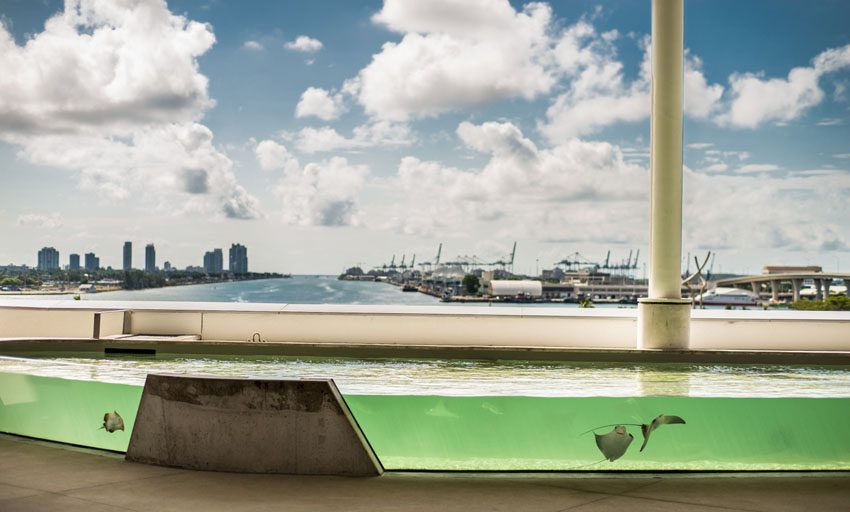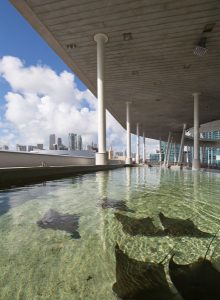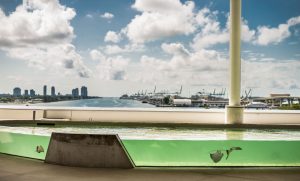
Any word prefaced by “sting” can sound a bit, well, intimidating. But stingrays are typically kind and gentle when interacting with people. A great way to learn about these graceful creatures is to visit our Florida Bay Touch Experience in the Aquarium, where you’ll find them gliding through an easy-to-reach pool that allows visitors to get hands-on with various species of this cool cartilaginous fish.
Ready to dive deeper into the mysterious ocean dweller roaming our touch pool waters? Here are eight facts about Frost Science’s friendly rays.
- We have 15 stingrays on display in our Bay Touch exhibit, comprised of three different species. You’ll find seven cownose stingrays, four yellow rays and four Atlantic rays.
- Our cownose rays were born in another aquarium facility while our yellow stingrays were collected locally by our husbandry staff. The Atlantic rays? They’re actually west coast Floridians.
- We feed our stingrays twice a day. In nature, their meals would’ve largely been made up of invertebrates and bivalves. We stick to their diet as close as possible by feeding them a savory mix of clam, shrimp, squid and several types of fish. Dinner party with the rays, anyone?
- People take vitamins to give their diet a healthy boost. Our stingrays do, too.
- Like all the organisms under our care, we visually check their health and behavior daily to make sure they’re in good shape. If anything’s amiss, our staff veterinarian will step in and provide direct veterinary care. This could include medicines such as antibiotics or even surgical treatments.
- Stingrays like their water warm—our exhibit has complex life support systems that help keep the water clean and at an ideal temp of roughly 77 degrees Fahrenheit.
- Our husbandry staff cleans the exhibit daily, removing waste from the sand and cleaning the acrylic windows. Twice a week, a staff member will swim through the exhibit while cleaning walls and other components—a clean pool makes for a better experience for both you and our rays!
- True to their name, stingrays have barbed stingers at the base of their tail that they use for defense. Here at the museum, we employ a commonly-used process called “de-barbing” to trim the sharp tip of the barb. This makes our rays safe for you to interact with and touch. However, the shortened barb will grow back over time—that makes it necessary to repeat the process every couple of months.
Our stingray touch encounter was created to encourage curiosity and exploration around these majestic creatures. Our hope is that it will inspire an interest in conserving the species, and the ocean as a whole.




